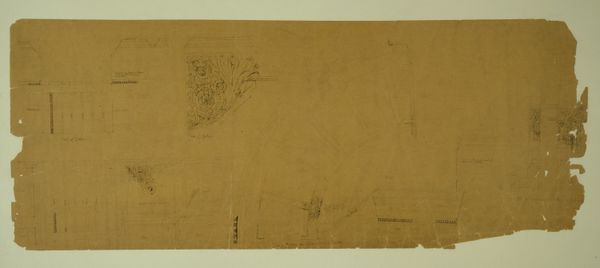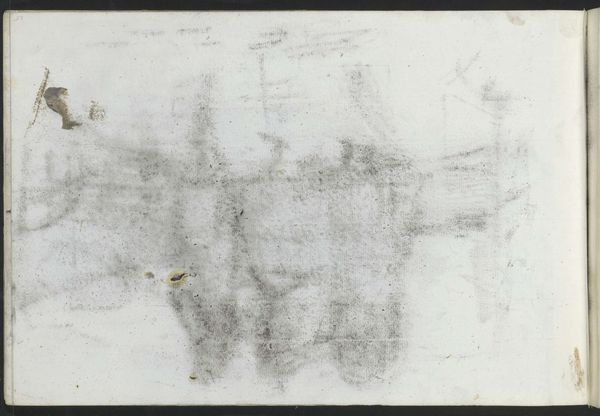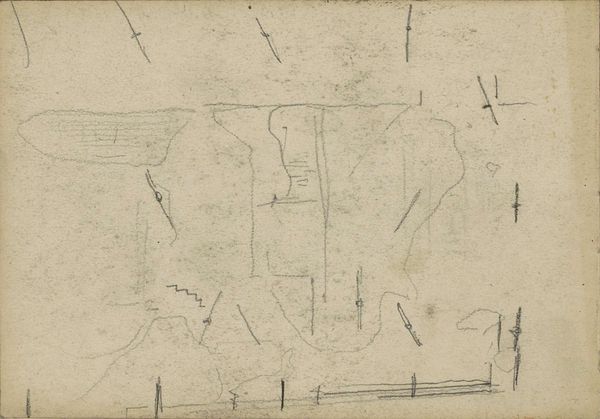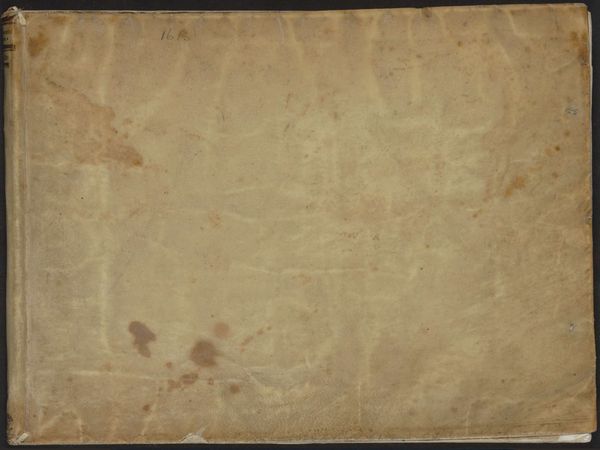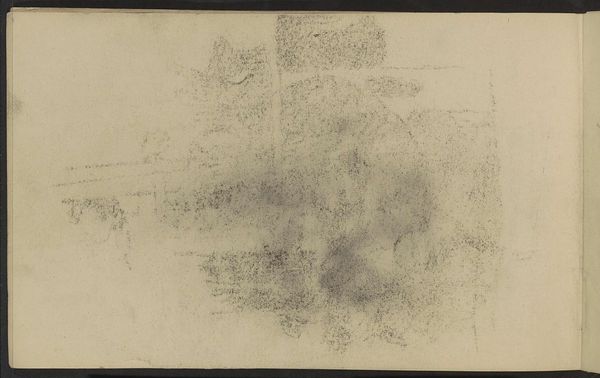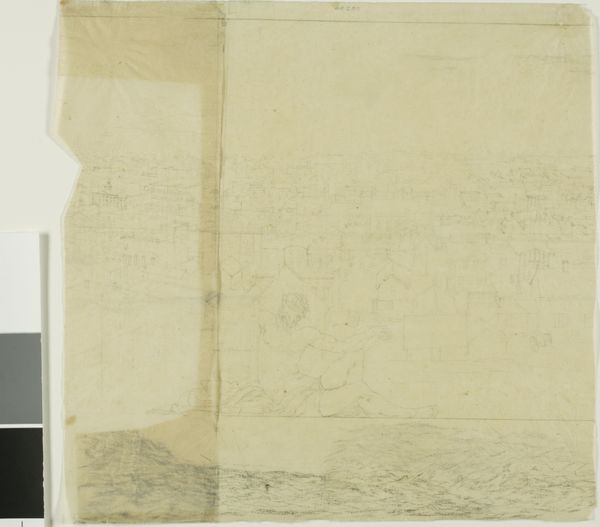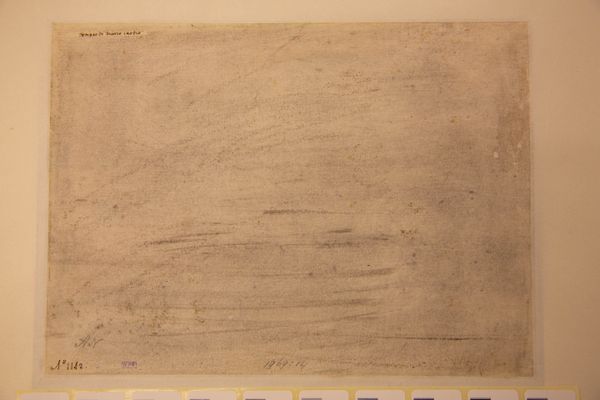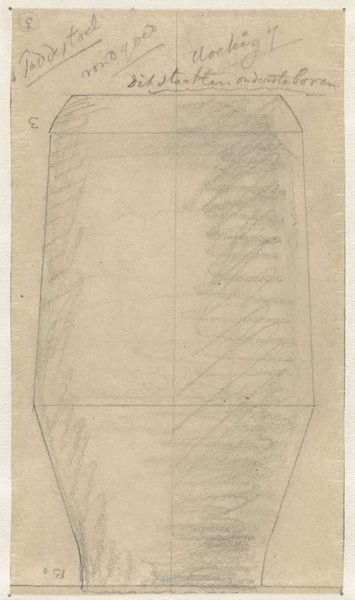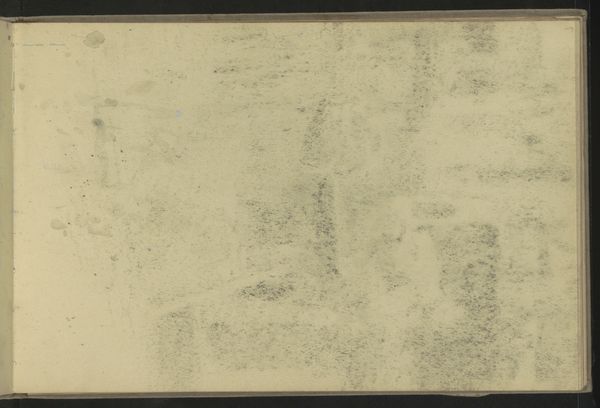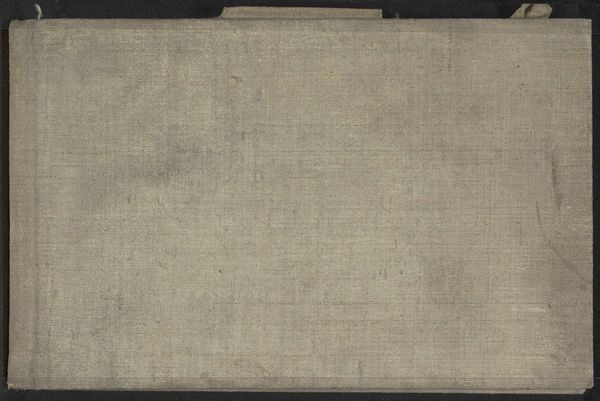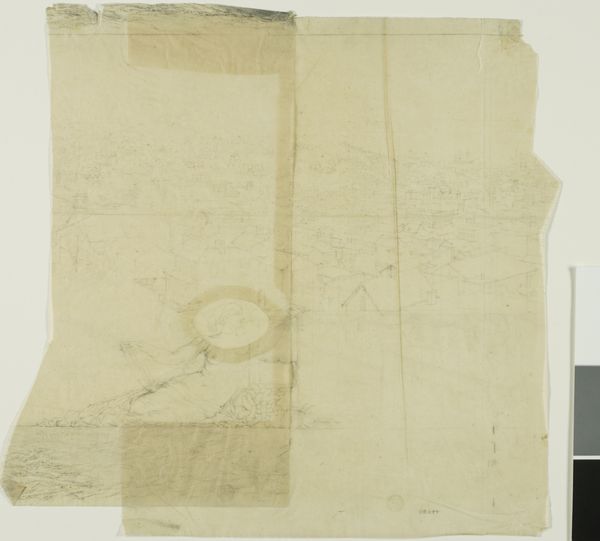
Study for a Bas-Relief for the Arc de Triomphe du Carrousel 18th-19th century
0:00
0:00
Dimensions: actual: 7.5 x 17.5 cm (2 15/16 x 6 7/8 in.)
Copyright: CC0 1.0
Curator: The Harvard Art Museums hold this study by Merry Joseph Blondel, titled "Study for a Bas-Relief for the Arc de Triomphe du Carrousel." Editor: It feels monumental, yet fragile at the same time. The muted tones and the sketched figures hint at a grand narrative that's just out of reach. Curator: Blondel was a celebrated painter during the Napoleonic era, deeply involved in shaping the visual language of imperial power. This sketch would have been part of a larger project glorifying Napoleon’s military victories. Editor: I see this as an example of how art is intrinsically linked with power. The Arc de Triomphe itself is a structure designed to awe and dominate, reinforcing a particular political narrative. Who is absent in this triumphant depiction, though? Curator: It is a top-down history, to be sure. Blondel’s idealized figures don’t leave much room for the experiences of everyday people or those who suffered as a result of these military campaigns. The power of the French empire depended on suppressing those voices. Editor: Precisely. Looking closely at these artifacts reminds us that art isn't neutral; it's always implicated in social and political dynamics. Curator: Indeed, these preliminary sketches help us understand how historical narratives are constructed and disseminated through art. Editor: It invites us to think critically about how we remember and commemorate historical events.
Comments
No comments
Be the first to comment and join the conversation on the ultimate creative platform.
